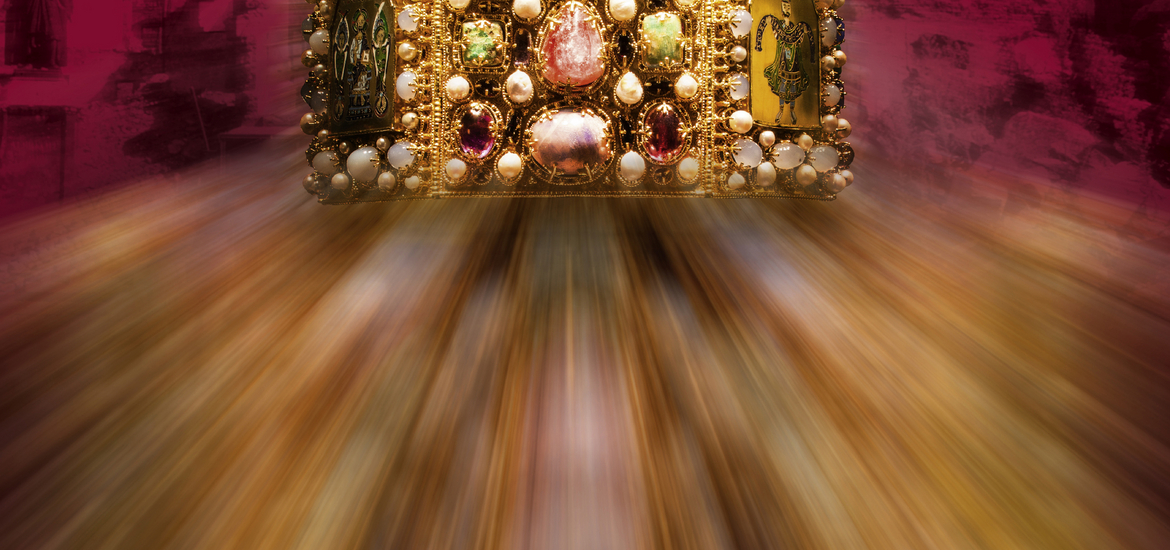The City Museum at Fembo's House (Stadtmuseum im Fembo-Haus) now presents costly copies of the crown, scepter and orb of the Holy Roman Empire in an innovative new permanent exhibit entitled "Crown - Power - History". In addition to the reproductions of the imperial insignia, the exhibit displays vivid pictures and fascinating original objects.
Speaking on a mulitmedia-guide, prominent visitors and newcomers to Nuremberg from by-gone-eras tell their exciting tales of the history of the city in nine languages. They bring to life almost 800 years of Nuremberg - from imperial times to reconstruction after World War II. Guests who are in ahurry can get an impressive and meaningful picture of Nuremberg's eventful past in only 30 minutes. Those who have more time can dig deeper and listen to further interesting background information about the objects on display.
Since the reign of the Emperor Charles IV, the ties between the Free Imperial City of Nuremberg and the Holy Roman Empire were even tighter than they had bee in the High Middle Ages: Charles designated the city as the place a newly-elected emperor should hold his first Imperial Diet. Another highlight in this close relationship to the German crown came in the reign of Emperor Sigismund von Luxemburg. IN 1423, he declared the heavily fortified city to be the repository of the imperial regalia, which were festively brought to Nuremberg in 1424. They were kept in the city for almost centuries, hung in a silver casket high above the altar of the church of the Hospital of the Holy Spirit to protect them from thieves. This chest can be seen today in the Germanisches Nationalmuseum.
Through Nuremberg's economic and political decline following the Thirty Year's War, the city was no longer able to protect the crown jewels as French Revolutionary troops approached. The imperial regalia were therefore sent to Vienna in 1796. Since then, all legal and diplomatic attempts to have them returned have been unsuccessful.
